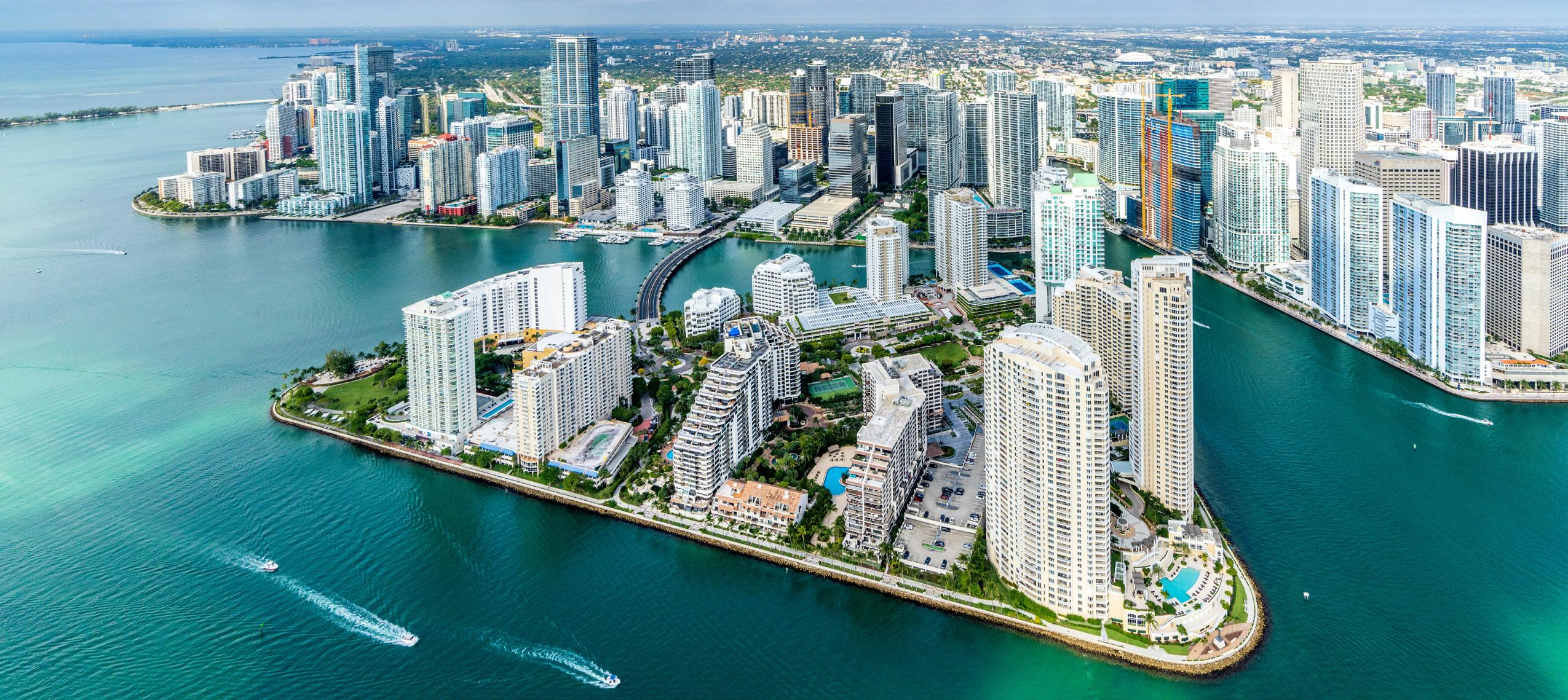
4 minute read
NORTH AMERICAN LUXURY REVIEW
Understanding the New Reality of 2023
In this month’s report, we take a step back in time to understand why the luxury real market has truly changed, how this new reality for buyers and sellers was created, and why it needs to be appreciated.
Using 2019 as our benchmark year, a year that saw a steady and more typical sales cycle but one that also showed a growing confidence in the purchase of luxury homes as the year progressed. Growth was driven by demand as buyers saw financial potential due to strong stability within the luxury real estate market.
Inventory availability in 2019 was not considered to be a factor in preventing sales, as most markets typically saw a significantly greater number of homes for sale than potential buyers. It’s interesting to note that prior to the pandemic it was rare for the luxury real estate market not to be more favorable to buyers, and equally, expectations were that homes would take much longer to sell than those in the traditional market.
As we all know, and it has been well documented, this all changed with the onset of the Covid-19 pandemic and the surge in demand for luxury properties. Demand outstripped supply at a dramatic and voracious level so that even the rapid change of the market in April 2022, which saw an influx of new listings, proved to be too little, given the uptake in sales during May and June of the same year.
Like 2019, in 2023 there has been a return of confidence in the purchase of homes, month over month sales volumes have increased, after the market faltered in the last four months of 2022. However, this is where the similarities end, as while demand is still important, the new reality is the status of the luxury real estate market is now clearly correlated to the level of available inventory.
Comparing inventory data in 2023 shows the average level of total listings per month is still approximately 40% below levels in 2019.
The data also clearly shows that it is not just the depleted level of inventory that is holding back sales, but as we can see from the charts below, it is the actual number of new listings entering the market each month that must also be directly correlated to sales activity – if the level of new inventory increases, so does the number of sold properties for the month, and vice versa.
New Listings & Solds for Single Famlly Homes in 2023
& Solds for Attached Properties in 2023
Putting this into context against 2019’s statistical data, specifically for May, June, and July, the percentage of sales against total inventory is, on average, around 17%, and against new inventory, the sales percentage is about 68%. In 2023, there is a distinct change with the percentage of sales against total inventory increasing to, on average, 35%, but more significantly, against new inventory, the sales percentage is about 95%.
This new reality of understanding inventory levels compared to sales is the key to appreciating how the market will continue to favor sellers, especially as many homeowners continue to remain reluctant to list their properties.
It’s safe to say that we can all recognize that the luxury real estate market has shifted, but overall, the market has now found its new norm, slowing from the fast-paced seller’s market of previous years. So, the key to selling and achieving the maximum return on your property lies in leveraging what the market is currently demanding.
While each market certainly has its own nuances, one trend has become very apparent in the luxury market – it’s all about the ‘experience.’ No matter who we talk to, savvy homeowners, luxury real estate professionals, developers, architects and designers, they are all putting their emphasis on defining the experience as part of their luxury marketing message.

The general message is that luxury is not about throwing money around by adding more fancy materials but rather about creating a comfortable experience that affords the feeling of luxurious wellness and safety.
In an era where mass consumption means both the upper class and the middle class can own the same luxury brand, the rich are forgoing material goods to invest in the immaterial as a way to signify status.
This is one of the reasons why luxury buyers are investing in smart homes and how this technology has often become a priority in their choice of new homes. Not only does a smart home add cosmetic value, but it also improves the quality of their lifestyle as they can use technology to create healthier environments, control daily routines and provide security and safety when at home or even at a distance.
The growth of the smart home industry is set to grow as the affluent and their design, construction, and architectural teams have moved from the “fun to have” to it becoming a necessary component to augment their lifestyle.

Developers who build with an eye toward environmental responsibility have been rewarded with high demand. Buyers are paying top dollar for properties that properly utilize green building technology and carbon-neutral energy programs, incorporating outdoor elements within the design, and implementing cleaner air systems and paint.
Many developers and architects are not seeing LEED (Leadership in Energy and Environmental Design – the gold standard of environmentally conscious and energy efficient design) as a plateau to reach. Instead, it is their starting point for a new way of thinking as well as making economic sense for future generations. It is a sentiment that holds true no matter the demographic or property being sold or purchased.
Members of The Institute are also noticing that affluent customers are putting greater expectations on the service levels of their realtors. They are looking for innovation in marketing their properties with the advent of AI and expertise in finding amenity-rich properties in preferred locations.
For homeowners looking for their next home, it is still important to recognize that although costs to purchase will be much higher currently, over the long-term real estate offers one of the most consistent ways to see a good return. More importantly, ownership provides security and a haven for their family.
For The Luxury North American Market
Single-Family Homes Attached Homes Single-Family List Price Attached List Price
All data is based off median values. Median prices represent properties priced above respective city benchmark prices.



